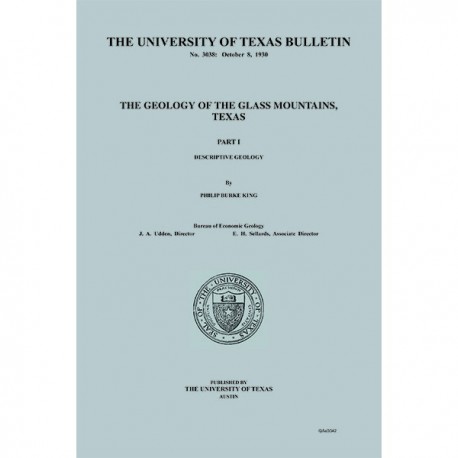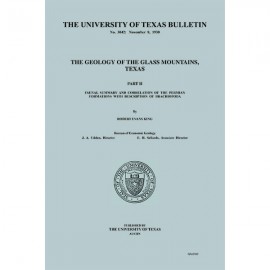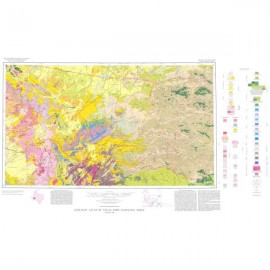UT Bulletins
-
Books & Reports
- Reports of Investigations
- Guidebooks
- Udden Series
- Geological Circulars
- Down To Earth
- Atlases of Major Oil and Gas Reservoirs
- Texas Memorial Museum Publications
- Environmental Geologic Atlas of the Texas Coastal Zone
- Mineral Resource Circulars
- Other Reports
- Seminars and Workshops
- Handbooks
- Submerged Lands of Texas
- Symposia
- Annual Reports
- Open File Reports
-
Maps & Cross Sections
- Thematic Maps
- Miscellaneous Maps, Charts & Sections
- Geologic Atlas of Texas
- STATEMAP Project Maps
- Geologic Quadrangle Maps
- Cross Sections
- Highway Geology Map
- Energy and Mineral Resource Maps
- Shoreline Change and Other Posters
- Wilcox Group, East Texas, Geological / Hydrological Folios
- Bouguer Gravity Atlas of Texas
- River Basin Regional Studies
- Featured Maps
- Posters
- Teachers & the Public
-
Geological Society Publications
- Gulf Coast Association of Geological Societies
- Alabama Geological Society
- Austin Geological Society
- Corpus Christi Geological Society
- Houston Geological Society
- Lafayette Geological Society
- Mississippi Geological Society
- New Orleans Geological Society
- South Texas Geological Society
- GCS SEPM Publications
- Historic BEG & UT Series
The Geology of the Glass Mountains - Part I, Descriptive Geology
BL3038
The Geology of the Glass Mountains, Texas, Part I, Descriptive Geology, by P. B. King. 167 p., 43 figs., 1 color map, 15 plates, 1930. Print Version.
For a downloadable, digital version: BL3038D.
This product is no longer in stock
BL3038. The Geology of the Glass Mountains, Texas, Part I, Descriptive Geology, by P. B. King. 167 p., 43 figs., 1 color map, 15 plates, 1930. For Part II, please see BL3042D.
From the FOREWORD
This publication on the Geology of the Glass Mountains is the result of cooperative work between Yale University, the Bureau of Economic Geology of The University of Texas, and the authors. The work was begun by Philip and Robert King in the summer of 1925 and was aided financially by Charles Schuchert during 1926 and 1927 … [The research] is in two parts as follows: Part I, Descriptive Geology by Philip Burke King [this volume], and The Geology of the Glass Mountains, Texas, Part II, Faunal Summary and Correlation of the Permian Formations With Description of Brachiopoda, by Robert E. King [BL3042D].
From the Abstract
This memoir describes the physiography, stratigraphy, and structure of the Glass Mountains and northern Marathon Basin in Trans-Pecos Texas. These two districts, which may collectively be spoken of as the Marathon region, are formed of Paleozoic rocks revealed by the erosion of a broad post-Cretaceous dome which lies slightly in front of the main Cordilleran ranges. The dome was originally sheeted over by Cretaceous rocks, which still surround it, and which rim the Paleozoic area in bounding escarpments.
Keywords: Glass Mountains, Marathon Basin, Marathon dome, Texas, Trans-Pecos Texas
Citation
King, P. B., 1930, The Geology of the Glass Mountains, Part I, Descriptive Geology: University of Texas, Austin, Bureau of Economic Geology, UT Bulletin 3038, 167 p.




